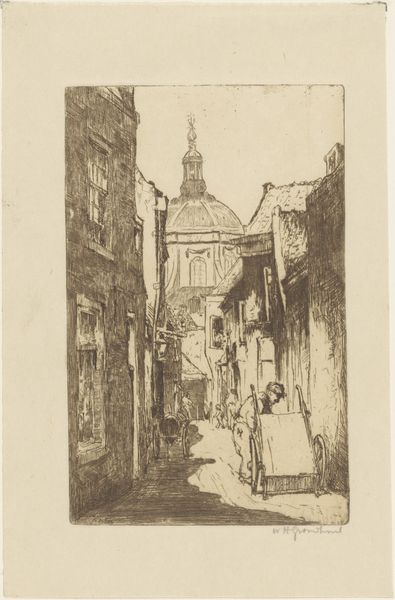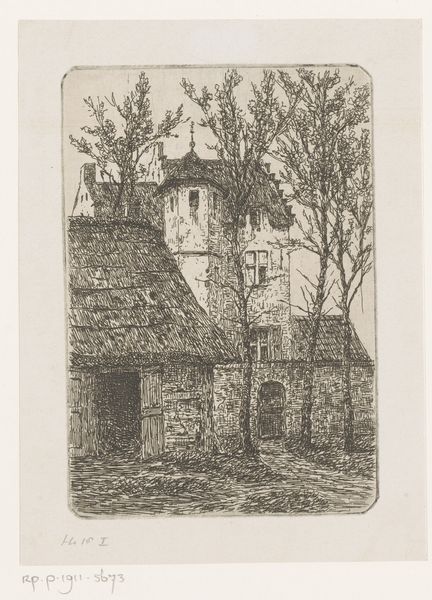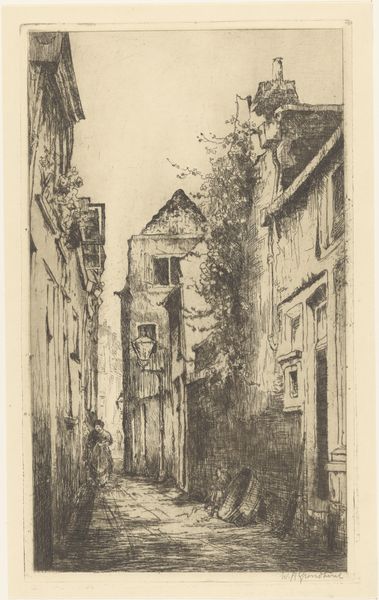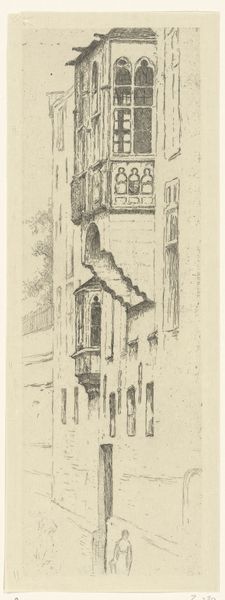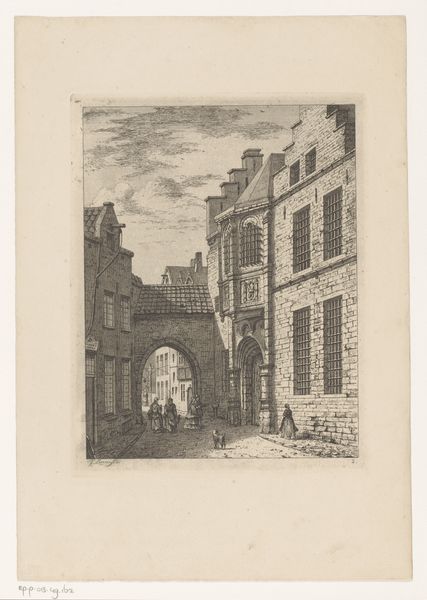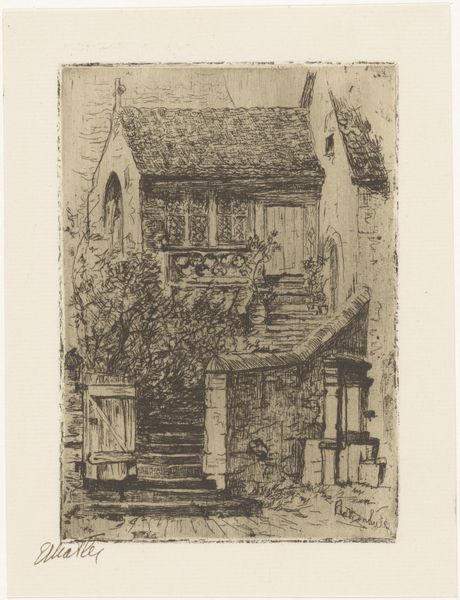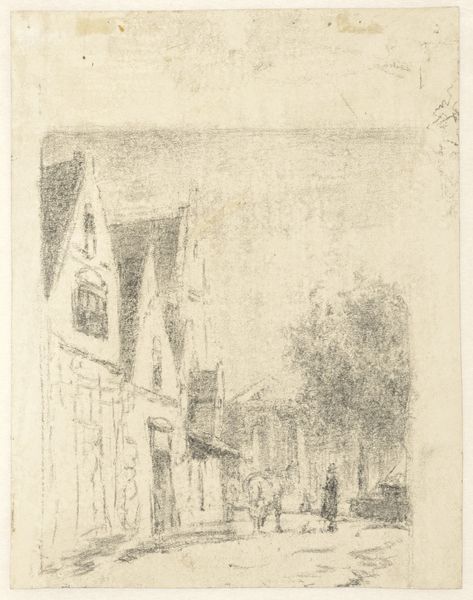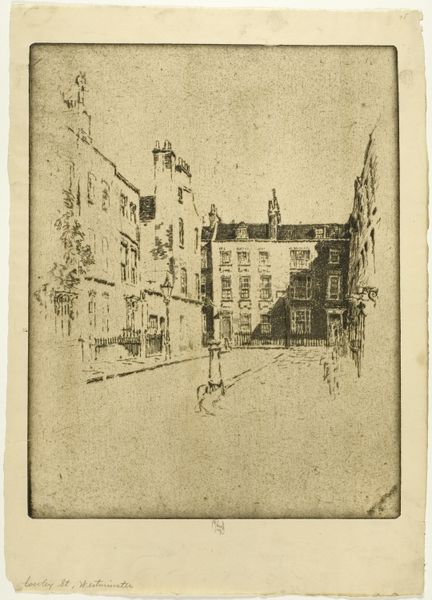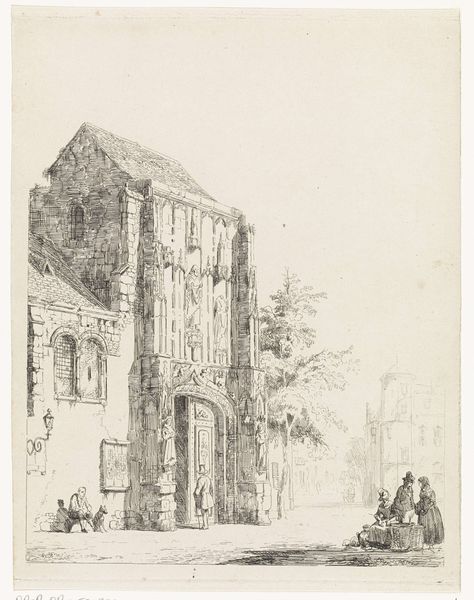
Dimensions: height 200 mm, width 80 mm
Copyright: Rijks Museum: Open Domain
Curator: Looking at this work, I immediately think of hushed tones and cobblestone streets worn smooth by time. There's a certain stillness in the scene. Editor: Indeed. This is "Gezicht in de Ravensteinstraat te Brussel," or "View of Ravenstein Street in Brussels," an etching made sometime between 1890 and 1930 by Philip Zilcken. It’s currently held in the Rijksmuseum. The artist’s hand is very much present through the ink and paper. Curator: Yes, the materiality is quite evident, isn’t it? The way the ink catches the light almost gives the scene a tactile quality. The social history is very palpable— it’s clear that this etching was likely intended for consumption by a burgeoning middle class eager for images of their cities. Were these streets typically more accessible to certain classes than others, I wonder? Editor: That's a fantastic point. Think about the broader social context: The rise of urban tourism, printmaking's function as a portable souvenir of place. Urban spaces always carry embedded socio-economic structures. We need to look at institutions shaping art production like galleries influencing which images became desirable at the time. This cityscape also serves as a portrait of a place undergoing rapid change during this era. Curator: And considering it’s an etching, there’s also a deliberate craft that goes into producing an image with this kind of distribution method, democratizing art production by leveraging print technology—a social role tied to access and aesthetics. This piece offers the same view multiple times. It's a replicable material culture of images that changed how places like this street were understood. Editor: Precisely. And if we consider museums and collecting practices during this period, who decides what "art" even is? Who curates whose image of Brussels and which Brussels? The artwork allows us to understand these issues as a conversation about power, art, and access. Curator: Ultimately, by observing Zilcken's method, his utilization of mass-produced artworks, it enables one to experience that particular urban moment within a changing landscape that is historically frozen and socially produced through distribution, consumption, labor and craft itself. Editor: Thank you. These images offer an archive and the potential for interrogating whose story they tell and for whom. Hopefully our reflections give people some insight into how that archive came to be, as well as its effects on public opinion and art consumption.
Comments
No comments
Be the first to comment and join the conversation on the ultimate creative platform.
